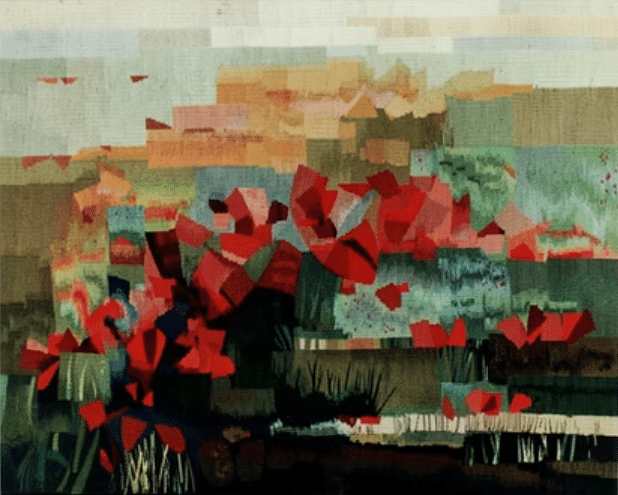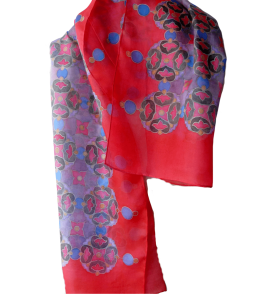Maia Tsinamdzgurishvili is a modern Georgian textile artist living and working in Tbilisi. I had a chance to visit with her in her apartment in Tbilisi in the hopes that I might learn not only about her own work, but about the state of modern textile arts in Georgia.
During my time with Maia she reminisced over freshly-baked cake about her past exhibitions, her travels, and her career as a fine artist. I also had the opportunity to tour her home studio and see first-hand her textile work, which elevates the simplicity of natural fibers like silk and wool into colorful tapestries, scarves, and canvases that have been displayed and loved around the world. Her art reimagines what raw material and traditional techniques are capable of, creating a body of work that is tied to her Georgian heritage and the world she inhabits but which is also uniquely her own.
History and Exhibitions
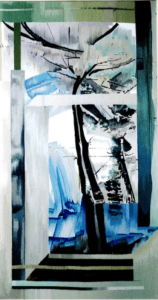
Maia began creating art as a young girl growing up in Tbilisi during the Soviet Union, in her parent’s apartment which she still calls her home and studio today. She attended art school in Georgia, graduating from the Tbilisi Academy of Fine Arts in 1990. Throughout her early career she participated in numerous exhibitions, but she remembers fondly the first significant moment of her early life as an artist. In 1997 she was presented with a prestigious award by the Georgian Ministry of Culture for her tapestry Iraky’s Window. As a result of the award, the tapestry was exhibited in the National Gallery in Tbilisi.
Since then, Maia has had a long and successful career and participated in countless exhibits across Georgia and in other countries. She has exhibited her art in shows as distant as Switzerland, the Netherlands, Israel, China, and the USA. In 2013, Maia was invited to exhibit her work in a private gallery on Sanibel Island in Florida, USA. As we spoke, it was clear to me that Maia’s time in America while overseeing her exhibition had a profound impact on her life and work. She spoke fondly and joyfully of her days on a sunny island in Florida, sharing her art in a small gallery and inspiring many through textile workshops and displays of her art.
Maia’s Art
Much of Maia’s current portfolio of art is taken up by what she considers “wearable art”—a collection of intricate handmade scarves that are carefully crafted through a variety of different techniques and materials, resulting in diverse examples of Maia’s artistic dexterity when it comes to blending fibers in unique and inventive ways.
Several of the scarves are crafted purely from airy, translucent silk hand painted with bright colors and repeating patterns. In others the base of the scarves is heavy, felted wool upon which she uses felting techniques to incorporate painted silk into the wool fibers, binding them together and creating a seamless material with a unique texture and beautifully merged colors and patterns. A piece that stood out to me among her blended fiber scarves is a grey wool scarf upon which she has felted pieces of white silk rescued from an old scrap of silk produced in a Soviet silk factory in Georgia. Because domestic silk production ceased in Georgia after the fall of the Soviet Union, I was excited to see this piece of Georgia’s textile history recycled in modern Georgian art.

Maia’s largest body of art is her work with silk paper making. This technique hand-presses silk from raw fibers into sheets as thin as paper, resulting in a material that is flat like a canvas but porous and delicately patterned. In order to produce this silk paper, Maia sources whole silkworm cocoons and extracts the silk fibers by hand, allowing herself total freedom to blend fibers in a number of different textures and styles, from a more traditional, straight woven pattern to airy, web-like abstractions.
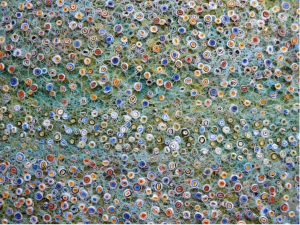
Upon these handmade silk canvases, she blends many materials and styles. At times she paints bright, abstract patterns and at others she incorporates drawings of seashells and recognizable forms. She has also developed another way of creatively using her silk paper by rolling sheets into tight scrolls, dyeing them in bright colors, cutting them in slices, and attaching them in layers upon her canvases. Sometimes her work remains in monochromatic greyscales, bringing the mesmerizing texture of silk paper to the foreground.
The last collection which Maia showed me in her studio was her old tapestry works. Though she rarely works in tapestry any longer, much of her earliest work was crafted from woven fibers. Made mostly from dyed wool, her tapestry works are bold and colorful and largely consisting of abstract designs. Before beginning to weave, Maia would first create her design through abstract or Cubist-inspired paintings which would then become the guide for her tapestry patterns. This process results in tapestries that at first appear to be paintings, with all the texture and patterns of brushstrokes, but which are nevertheless crafted from traditional tapestry techniques. Her first piece to be awarded major recognition, Iraky’s Window, was one such tapestry from her early portfolio in the 1990’s.
The Inspiration and Impact of Maia’s Textile Art
After my private tour of Maia’s studio and work, I spoke with her to better understand the source of her inspiration. In explaining the process through which she creates her work, Maia spoke of how her inspiration is often a natural and unconscious part of the process; she allows her intuition and technique to carry her through a piece so that its colors and patterns form organically. However, she often feels that the inspiration reveals itself by the time she completes a piece—she will find herself connecting it to certain periods of life spent in nature, in beautiful places, and amongst friends. Many of her silk paper pieces have titles connected to places she has visited, such as On the Beach, Sanibel Island On My Mind, or Fantasy of Rhine. Looking closely at her dreamy abstract pieces it is clear that they conjure images and feelings of oceans, sunsets, and flowing rivers. Sometimes her inspiration comes more explicitly from things she sees around her, such as a silk scarf upon which she reimagined the decorative design from the iron railings in the stairwell of her apartment—a connection which, upon leaving her home, I made sure to confirm for myself.
I was also curious to understand how Maia connects her own modern work to her Georgian heritage. Again, Maia mused about the organic nature of her work; rarely does she seek to capture an explicit moment or idea and leans instead towards feelings and impressions. However, Maia does see the undeniable influence that growing up in Georgia has had on her work and the way in which her life experiences have shaped her use of color, material, and form. Often, she says, she is inspired by traditional Georgian designs that exist around her. From my own observations, it seems clear that her commitment to raw and natural materials like silk and wool are also deeply tied to her Georgian heritage. Such materials have been present in and integral to Georgian culture for thousands of years, and it seems to me that Maia’s work revives and refreshes such traditions and brings them into the modern art space in new and unexpected ways. Though textile art has largely disappeared in Georgia in the last decades, it is clear that it still lives through artists like Maia.
More of Maia’s work can be found on her website.
You’ll Also Love
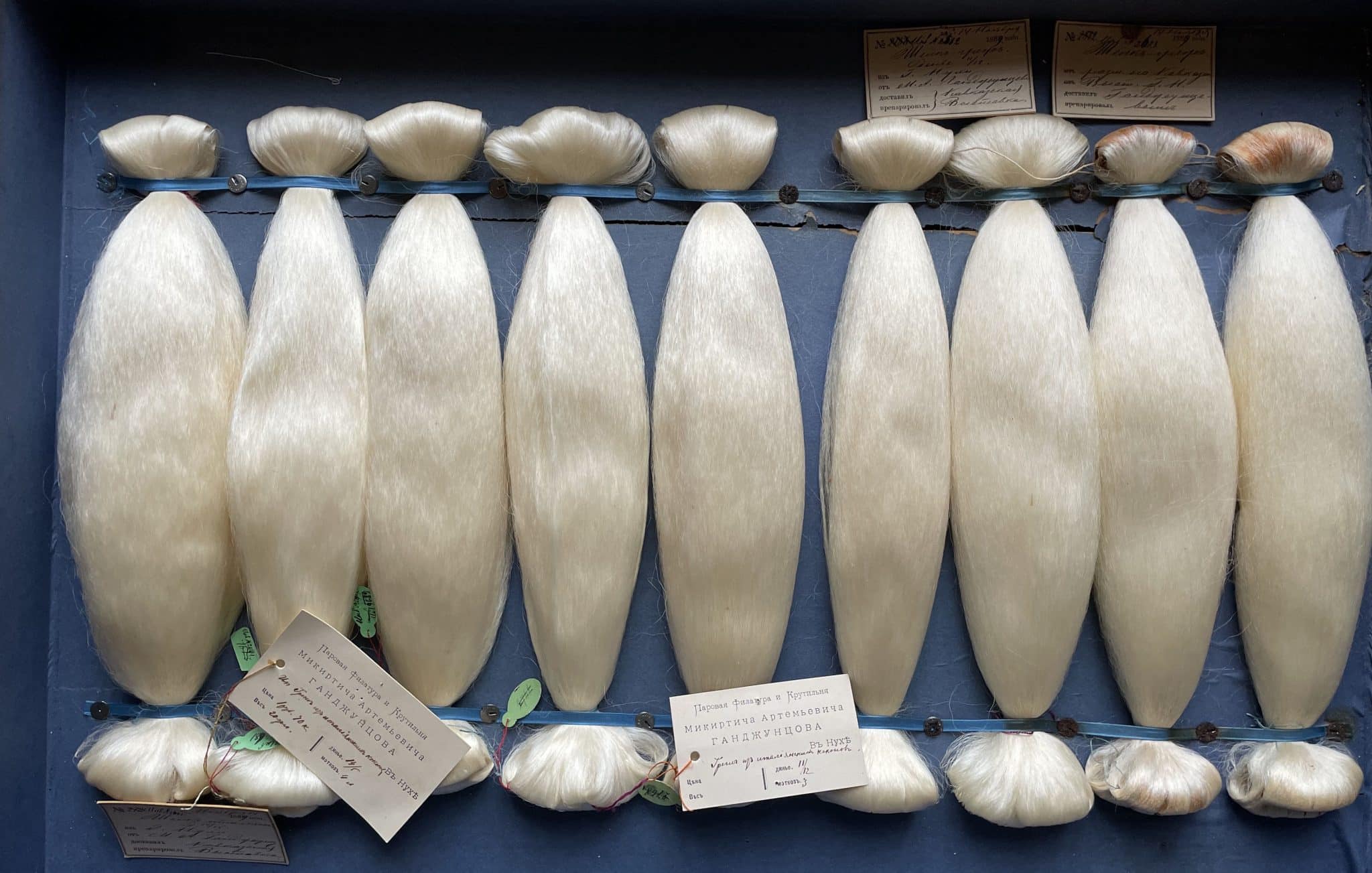
The State Silk Museum in Tbilisi, Georgia
The Georgian State Silk Museum celebrates and supports sericulture (the process of making silk) as an act of biology, engineering, handicraft, and art. Its displays take you through the lifecycle of the silk-worm to the gathering, weaving, and dying of silk threads to the final cultural products sericulture produces. The facility also hosts a reference […]
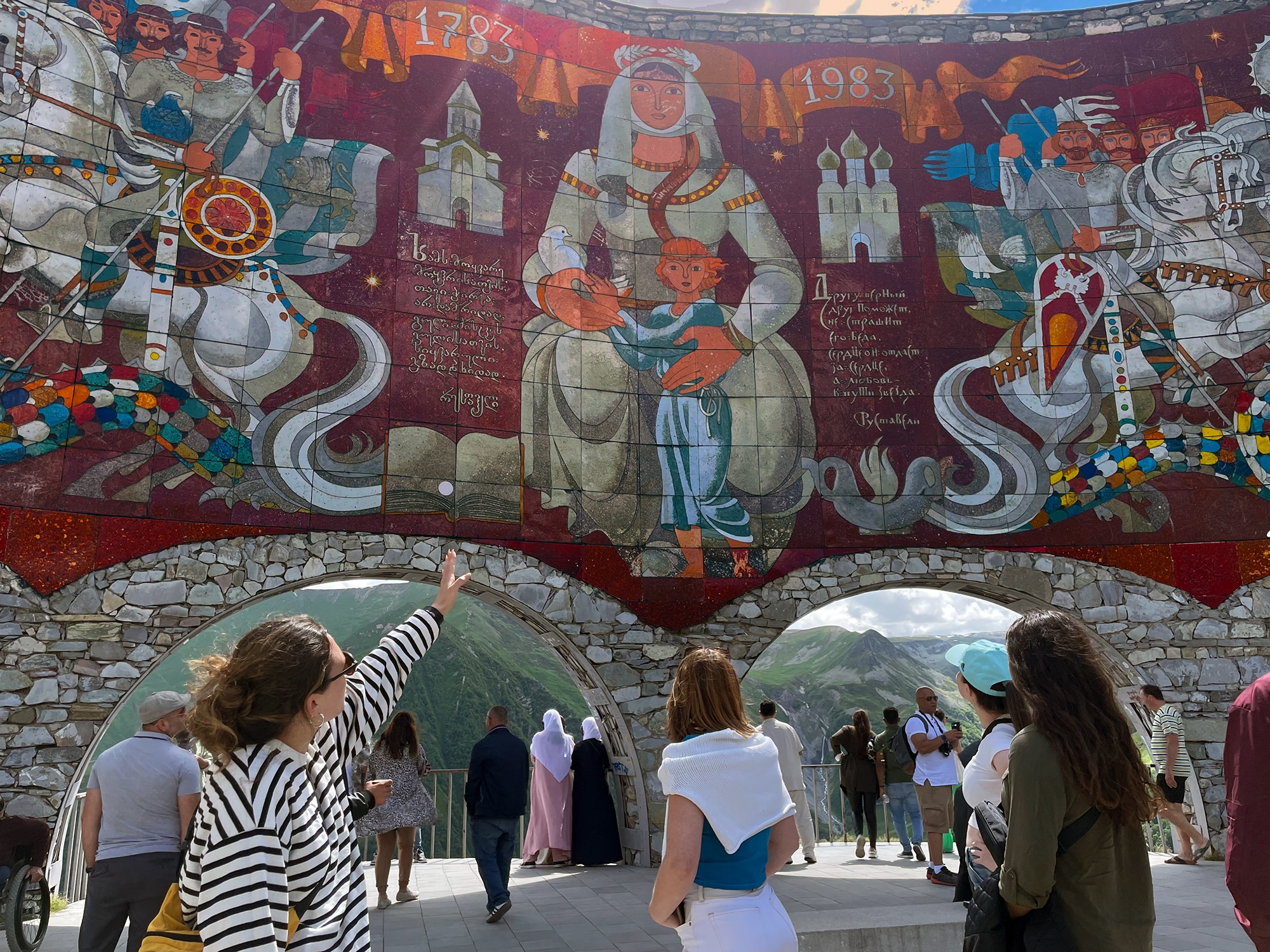
Soviet Mosaics in Georgia: Controversy, History, and Fascination
I can’t put my finger on what sparked my interest in Soviet-era mosaics, but at this point, I’m obsessed. As someone who grew up in the US, it’s a rather foreign thing to see the sides of entire buildings decked out in brightly colored scenes made of tiles. It also contradicts what many people believe […]

Bookstores in Tbilisi, Georgia
As an avid reader and introvert, who often prefers a cozy bookstore to bars, I set out to explore three recommended ex-pat bookstores in Tbilisi. Places like Prospero’s, Auditoria, and On the Same Page all cater to Anglophone and/or Russophone readers. I found that these three stores varied widely in terms of ambience and selections, […]
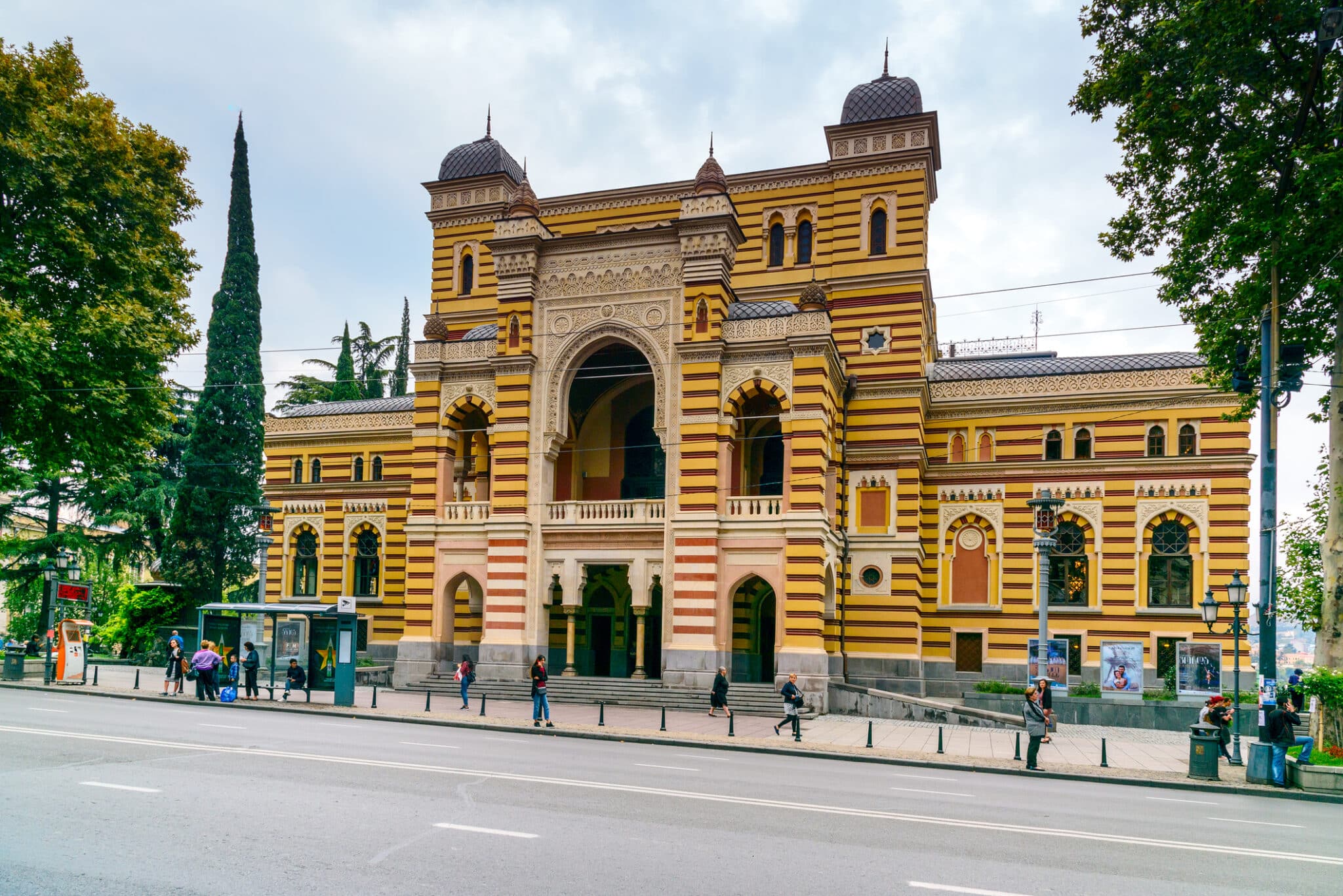
The Opera and Ballet Theater of Tbilisi
The Opera and Ballet Theater of Tbilisi has a rich history and offers a diverse range of opera and ballet performances – from traditional masterpieces to innovative contemporary offerings. Built in the late 19th century, the theater showcases a stunning blend of neoclassical and Moorish architectural styles as well as opulent interiors, creating a majestic […]
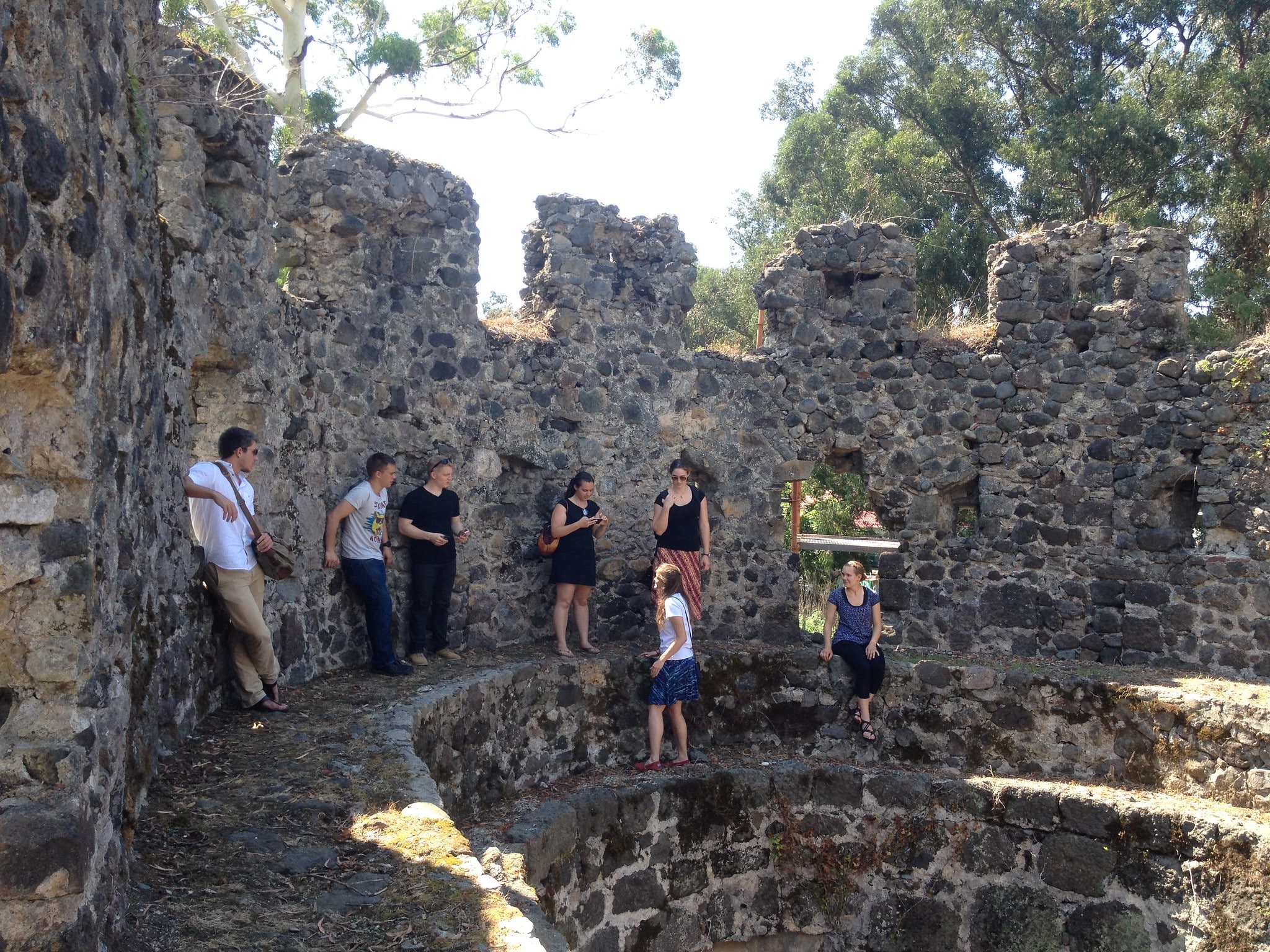
Fortress of Gonio: Georgia’s Roman Heritage
The Fortress of Gonio, located in Adjara, Georgia, is an ancient Roman fortification dating back to the 1st century AD. A strategic point along the Black Sea coast, over the centuries, it was expanded and fortified by the Byzantines and Ottomans. Today, the well-preserved remains of Gonio Fortress stand as an important cultural and archaeological […]


